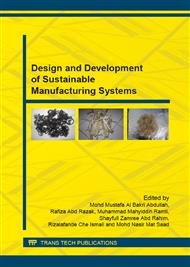p.198
p.203
p.212
p.216
p.221
p.229
p.234
p.238
p.243
Correlation of Impact Energy from Instrumented Charpy Impact
Abstract:
This paper proposes the correlation of absorbed energy with calculated energy using the power spectrum density (PSD) method. The total absorbed energy was obtained using the dial/encoder system may significantly vary depending on the strength and ductility of the material. In addition, according to ASTM E23, over 80% of absorbed energy is inaccurate and approximate. For this reason, we determined the energy collected from the dial/encoder Charpy impact test using the signal processing approach. Strain gauges were connected to the Charpy impact striker and the high frequency data acquisition system in order to capture the dynamic impact strain response. Specimens of an aluminium alloy of 6061-T6 and carbon steel 1050 with different velocities and thicknesses were used in the experiment. The specimens are prepared based on the ASTM E23. A collection of signal was converted from the time domain to the frequency domain by means of PSD method and the area under its plot was used to calculate strain energy. The comparison between energy absorbed during the experiment with PSD peak and the strain energy were performed using different materials, velocities and thicknesses. The total energy absorbed for both material with the PSD peak and the strain energy using the dial/encoder system can be linked by a power law equation with R2 96% and R2 94 %. Thus, the effects of the strain signal pattern and impact duration with different parameters were correlated with the PSD peak and the strain energy. This correlation using PSD can be used as an alternative for the charpy impact test and solve the problem of inaccurate absorbed energy.
Info:
Periodical:
Pages:
221-226
Citation:
Online since:
November 2015
Authors:
Keywords:
Price:
Сopyright:
© 2015 Trans Tech Publications Ltd. All Rights Reserved
Share:
Citation:


